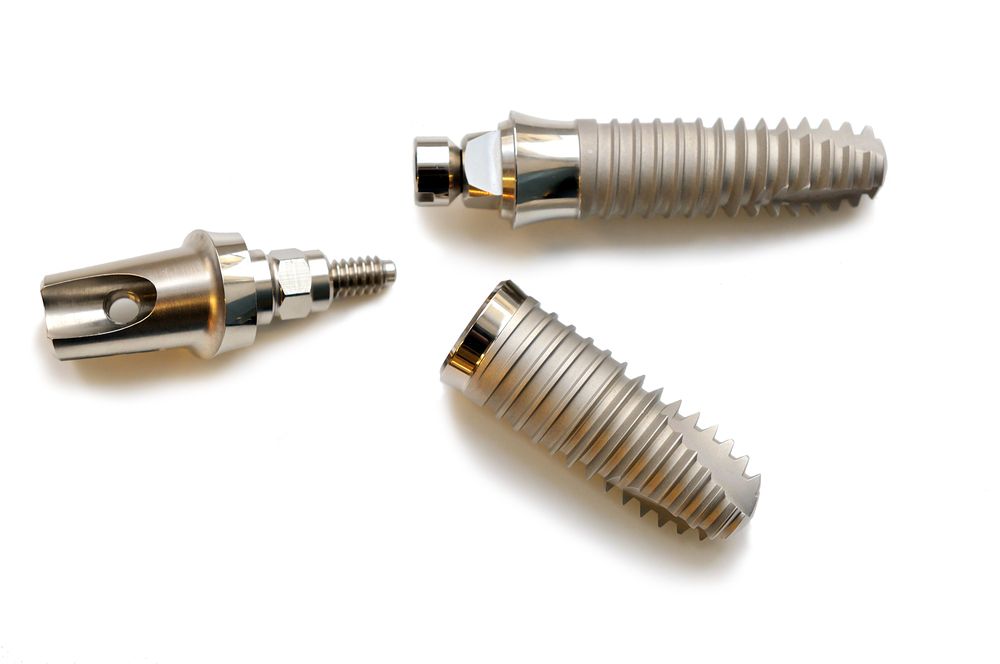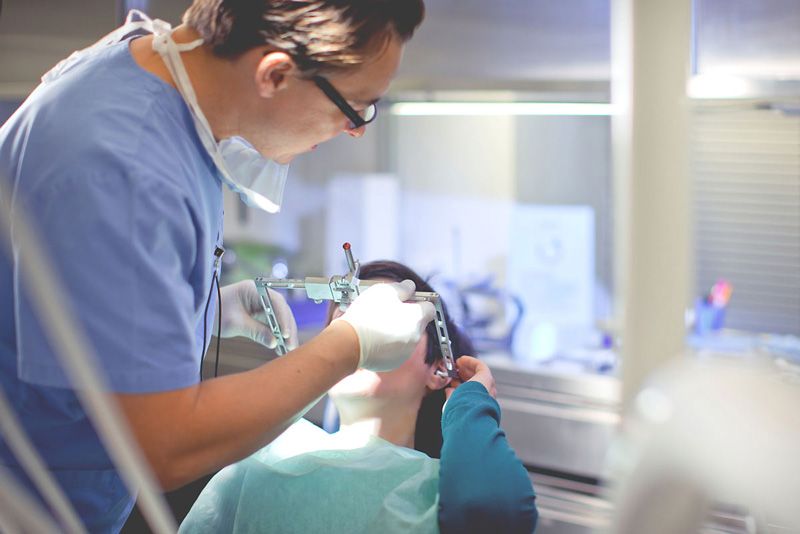
Not very long ago, a bridge was the only possibility to close a gap of one, two or three missing teeth in a row. That involved sacrificing the crowns of neighboring teeth so they could serve as abutment teeth for the bridge. In a tooth arch that didn’t have enough natural teeth left to anchor a fixed bridge, removable dentures where the only option. And a toothless jaw invariably meant the fitting of a complete denture (“false teeth”). With the advent of dental implants, this situation has changed dramatically … for the better.
Implants are a very attractive way to close small gaps without sacrificing the crowns of healthy teeth. And they form (quite literally) the basis for many solutions to the problem of recreating an aesthetically pleasing, functional oral situation for patients with considerable tooth loss. Dental implants are artificial dental roots that are placed in the jaw bone and, over some time, integrate into the tissue so they can withstand all sorts of pressure, shear and strain, just like real tooth roots. Dental implants are mostly made from titanium, a highly biocompatible precious metal that encourages the integration into the bone. There is also a well-tested alternative in the form of implants partially or entirely made from zirconia ceramics.
You can get further Informations about the costs of an Instant dental inlay in our download section(german only) or directly in our Practice in 1010 Vienna.
The part of an implant that protrudes from the gums can support fixed dental restorations (crowns or bridges), or it can be used to lend more stability to removable dentures. Depending on the oral situation, implants can close single gaps, or they can be used to replace most or all of the teeth in a partially or entirely toothless jaw. Important fact: A small number of implants (that may support bridges or precision attachment dentures) are often enough for an aesthetically convincing and functionally acceptable solution. In the hands of an experienced oral surgeon, the implantation procedure is not such a big deal anymore. Please ask us for a consultation: We will inform you comprehensively about individual possibilities, procedure and risks of implant placement, and of course about the cost of implant solutions.
Benefits of dental implants
Implants allow fixed dental restorations instead of loose dentures even if there are only few or no teeth left. Implants work and look like natural teeth. When closing a small gap with an implant, neighboring teeth stay intact, because they don’t have to become abutment teeth, as with a bridge. Implants transfer masticatory (chewing) pressure to the jaw bone, thus preventing loss of bone substance. With the jaw keeping its form, lips and cheeks retain their shape and firmness.
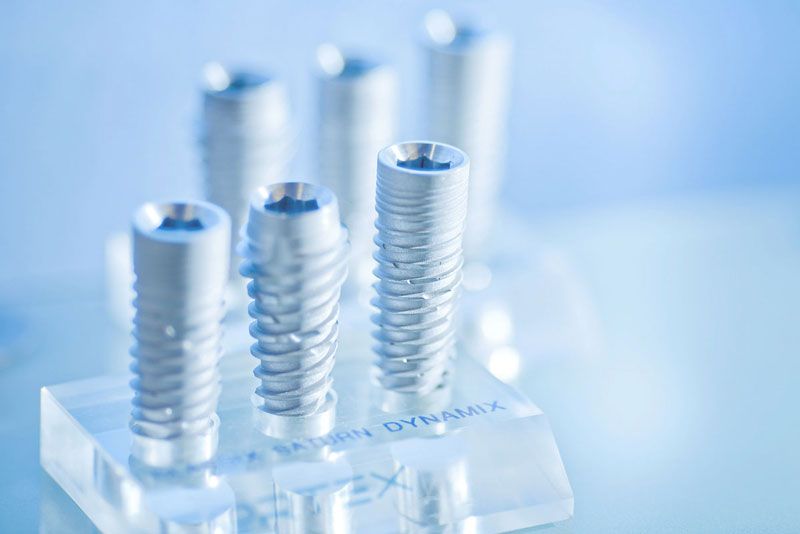
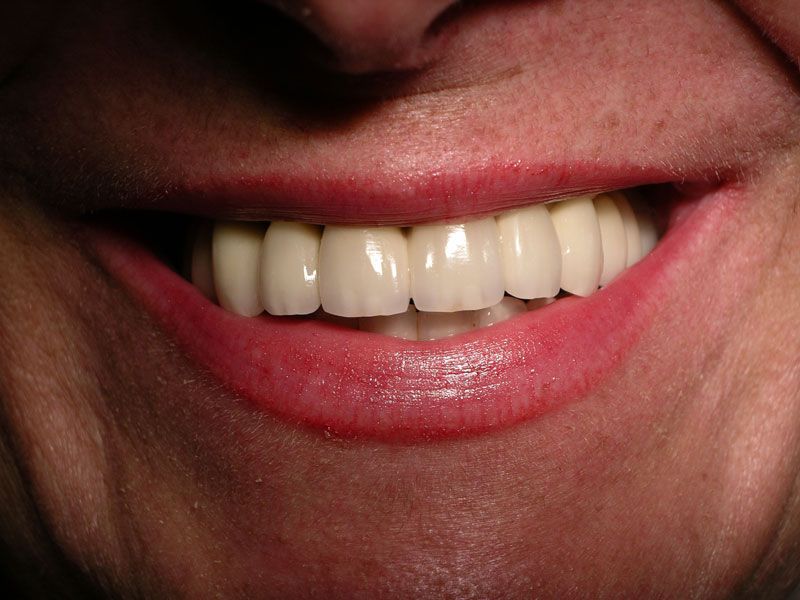
Requirements for the succesful placement of implants
Implants are an ideal solutions for many patients. If they are placed as soon as possible after tooth loss, success is almost guaranteed. However, some patients face a higher risk of losing the implant, and we won’t recommend the procedure without reserve. If you wish, we can advise you in detail about the benefits and risks of implant therapy in your individual situation.
Here are the general requirements for successful implant treatment:
Good oral health: After a thorough professional oral hygiene treatment, we will test your oral cavity and gingival pockets for the presence of certain aggressive microorganisms that can cause problems in the healing phase of implants, inflammations of the gums around implants and implant loss. If we detect those germs, antibiotic therapy is required to secure the longtime success of the pending implant treatment. Generally, all periodontal inflammations must be treated and resolved prior to implant placement.
Implants don’t belong in an oral situation with broken fillings and loose crowns, as those are detrimental to effective oral hygiene. Before starting implant treatment, we must first bring your teeth in good shape. To successfully heal and stay stable in the long run, an implant needs to be surrounded by sufficient bone substance. If the jaw bone does not have the required height, width or density, we will consider bone rebuilding/augmentation measures. In some cases, bone augmentation measures can be performed together with the placement of the implants.
If extensive measures are required (bone extension, sinus lift, bone transplant), bone rebuilding must be completed before the implant treatment. To gain insight into your bone situation, implant planning involves the creation of detailed 3D x-ray images. Bruxism (nighttime grinding or pressing of teeth) is a risky burden for implants and their ceramic “superstructures”. To prevent material damage and other complications from pressure and shearing forces, a mouth piece needs to be worn at night prior and after the implantation.
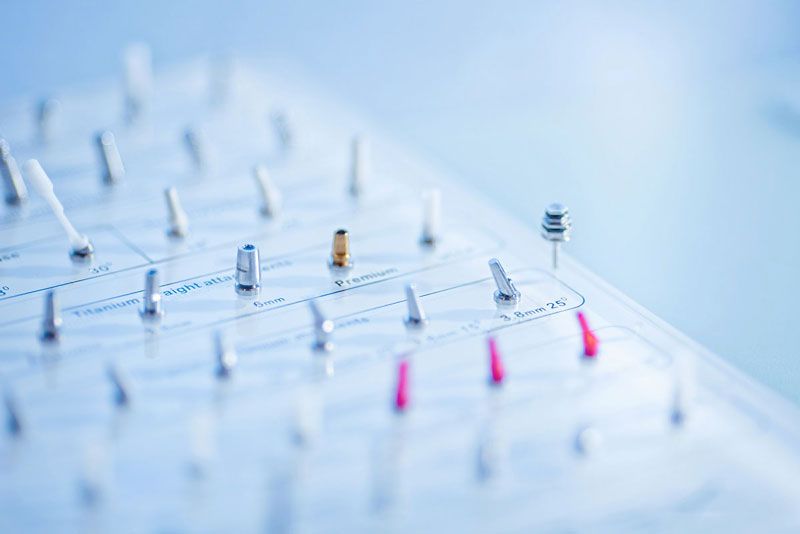
If implantation goes wrong…
An implantation can indeed be unsuccessful. During the healing phase, putting too much load on it too soon can prevent integration into the bone. Infections and inflammations of the surgical wound bear a high risk of early implant loss. But that doesn’t have to mean you can’t have implants at all. A second attempt at implantation after the bone has healed completely offers a new chance for success.
The risk of complications is higher if the blood circulation in your gums is not very good. This is the case for patients suffering from diabetes, and for smokers, who need to be extra meticulous with oral hygiene to prevent gum inflammations. Most implant failures occur during the healing phase and in the course of the first 18 months after implantation. If you have made it safely through those one and a half years, you can be fairly sure that your implants are going to be stable in the long run.
When we advise against implants
Children and teenagers cannot get implants, because their jaw bones are still growing. An implantation during pregnancy would mean an unnecessary burden for mother and child. Plus, pregnancy hormonal changes bring along a higher risk of gum inflammations. An immune system weakened by disease (leukemia, HIV), radiation therapy or medication (e.g. for severe rheumatic diseases) must be spared the extra risk of infection that is unavoidable during and after an implantation procedure.
A word about implant hygiene
Implants can’t get caries – so much is true. However, your tooth brush will keep busy nevertheless. Implant surfaces can harbor bacterial plaque that is liable to cause gum inflammations. Periimplantitis, an inflammation of the gums around an implant, may cause implant loss… and it may progress so quickly that it becomes practically unstoppable. Periimplantitis prophylaxis is thus absolutely crucial for implant preservation. Periimplantitis risk is highest during the first 18 months after implantation. During this phase, we recommend professional oral hygiene appointments every three months to create a solid foundation for home implant care with tooth brush, floss and interdental brushes. And: Even implants benefit from fluoridation, as it suppresses bacteria growth. After the first 18 months, twice yearly oral hygiene appointments and thorough home care suffice to keep your implants in good shape.
At a glance: Seven reasons for implant therapy at MeinZahn
- Laugh, smile, talk and eat confidently: the perfect aesthetics and natural stability of implants leave you with nothing to worry about
- Preserve your bone substance: no loss of jaw bone, no shrunken cheeks and lips
- Removable dentures can be replaced with fixed reconstructions
- Small gaps are closed without crowning adjacent teeth
- Interdental spaces can be cleaned like those of natural teeth, with floss and interdental brushes
- Modern 3D planning achieves convincing solutions even for complicated initial situations
- Planning and implantation by an experienced oral surgery specialist: safe treatment with
three months warranty of success
Dental advice – Implant care
Gum inflammations around implants are dangerous. Sensitivity towards acids – the only weak point of our otherwise perfectly robust natural tooth substance and the reason…

